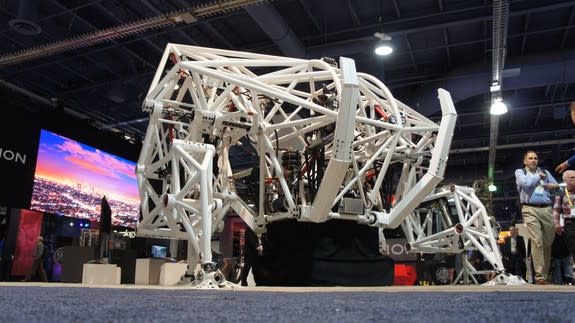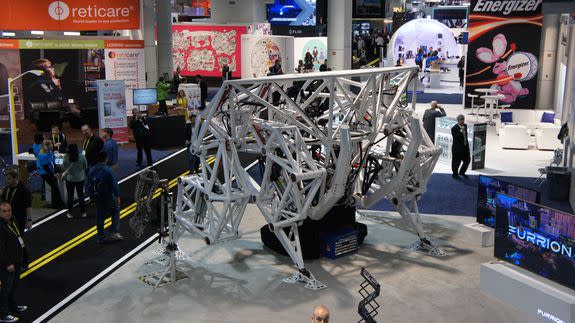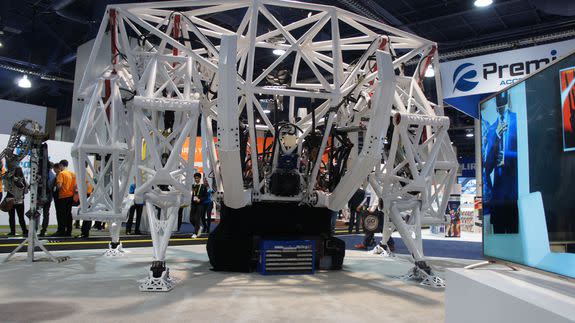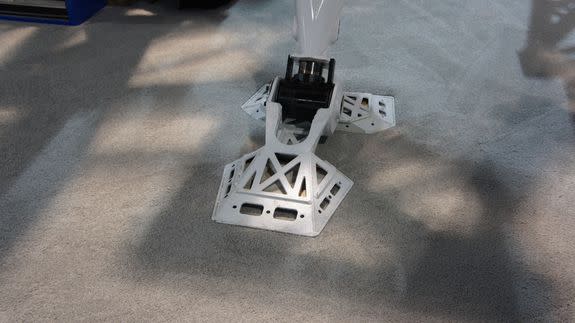Prosthesis is a huge, terrifying exoskeleton built for real-life mech races

LAS VEGAS — Standing silently on the CES floor, a giant Prosthesis exoskeleton is coiled, ready for action.
But there's no pilot and, at 14 feet tall and 7,000 pounds, Furrion Robotic's racing mech would tear through at least half a dozen CES booths. It will not race. It will not move. Not today.
SEE ALSO: The best tech of CES 2017
This spring, however, Furrion, which also makes luxury, custom RVs, HDTVs and appliances, will race other giant mechs in the Nevada dessert.
Furrion executives told me that this is the start of a new sport, following in the footsteps of drone racing, robotic Olympics and drone fights.

Image: lance ulanoff/mashable
Prosthesis, though, is not a robot. It's a exoskeleton that amplifies the pilot's movements. Inside, a highly trained pilot would move her arms and legs as if she was running. The Prosthesis' hydraulic-powered limbs move in sync and the mech can gallop like a giant, metal animal at up to 21 mph. Without a pilot, Prosthesis is just a giant Erector set. There's no autonomy, which is comforting when you consider the damage it could do with a mind of its own.

Image: Lance Ulanoff/mashable
There is a pair of gray metal arms on Prosthesis, but they're just to help the mech right itself if fit falls over. I guess that might happen after one of Prosthesis' 10 foot leaps. That's right: This nearly 4-ton exoskeleton can leap 10 feet in the air. It's hard to imagine a more terrifying sight.
On the other hand, if Prosthesis were in the thick of a mech race, a 10 foot leap might be considered pretty exciting.

Image: lance ulanoff/mashable
The exoskeleton, which is made of chromoly, a steel alloy that Furrion says is is harder and more durable than standard steel, carries a massive lithium ion battery and can run for two hours on a charge.
Furrion Robotics spent 8 years developing Prosthesis and almost $2 million and two years building it. They're now in the process of training pilots, who get strapped into a harness in the center of the exoskeleton. There's even a strap for their heads, so Prosthesis' lights turn when the pilot turns her head.

Image: lance ulanoff/mashable
The behemoth is still under development. Furrion hopes to finish the digital interface, the exo-bionic control frame and add some more cameras for safety before its first race this spring. The company is also planning a line of smaller and more agile exoskeletons that enterprising mech athletes can purchase in the future.
NBD: I'm standing on an RV, next to a helicopter, looking down at a giant robot. #CES2017 #MashCES https://t.co/N9f0CMW9AI
— Lance Ulanoff (@LanceUlanoff) January 5, 2017

 Yahoo News
Yahoo News 